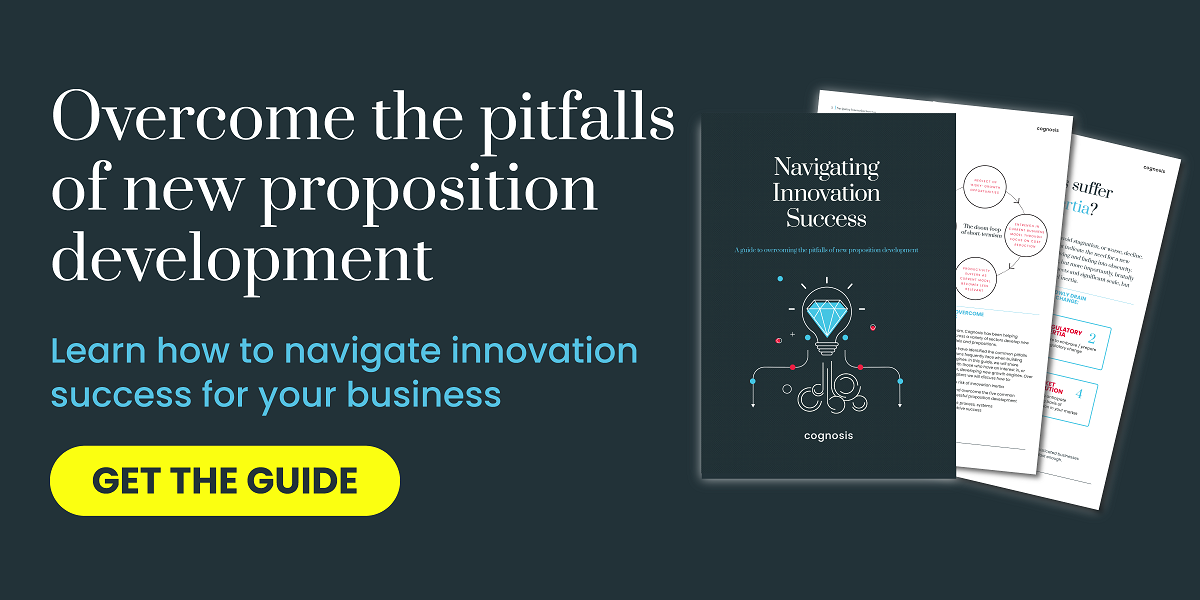5 Steps to building world class value propositions
Being customer-centric is essential to any business that is trying to drive long term sustainable growth. A key element of this is building a clearly articulated value proposition for each customer segment. Here are 5 steps to delivering world-class propositions that will set you apart from the competition.

Being customer-centric is essential to any business that is trying to drive long term sustainable growth. A key element of this is building a clearly articulated value proposition for each customer segment.
Over the years we have helped many companies define compelling value propositions for different client segments and helped them build clear, actionable strategies to implement their new propositions. Based on our experience we have identified five steps to delivering world class value propositions that clearly set companies apart from their competition. They are as follows:
Step 1: Insight
Most critical of all is a thorough understanding of the needs of your target customer segment. This insight into customer needs can be gathered either through qualitative or quantitative methods. Once you have gathered customer insight, use a framework to map out the following elements:
- The segments key jobs to be done - what are they trying to achieve in their work and lives
- Identify the key pains that they face if there is a bad outcome or the risks to their business or themselves related to the jobs you have identified
- Finally identify the gains or outcomes that will really make a difference to your customer
A simple example of this is as follows:
For one of our clients, driving instore promotion & display was one of their key jobs. A pain was non-compliance with putting up instore displays and a gain was to have a way to track display implementation in an easy-to-use format such as a mobile app.
Note – at this stage of the value proposition development it is essential that you focus purely on the customer needs, pain and gains and what really matters to them.
The next stage is to map your products and services against the jobs, pains and gains identified for each customer segment. This will provide you with a clear understanding of where your products or services meet customer needs, where you have potential gaps or where you have products or services that aren’t relevant and don’t meet any needs and could potentially be culled.
Step 2: Competitors
A common mistake is assessing your customer value proposition in a vacuum.
In reality your customer is exposed to your competitors value proposition at the same time as to yours, so you need a thorough understanding of the competitor’s value proposition which is targeted at your very same customer. This is to assess whether you truly have a superior proposition in the areas that really matter or whether you are inferior and need to enhance your proposition.
There are numerous examples where companies have focused solely on the customer and ignored the competitor only to end up with a bland or inferior value proposition. An example of this from the asset management world is where a large South African based asset manager conducted consumer research and identified an insight around the importance of having a global footprint with access to different markets. They had offices in five countries and invested heavily in communicating their ‘global’ reach across these five markets. They failed to stop and think about competitors, because shortly after launching their campaign one of their global wealth competitors hit back with communication of its own highlighting that they had offices in 69 countries globally.
This is just one example, but we see examples like this all the time. Ignore competitors at your peril.
Step 3: Buy-in
Its really important to build alignment and buy-in across the organisation from the executive team to the team that will be responsible for implementing the value proposition on the ground. As with any strategy and implementation, when the rubber hits the road and you are in full implementation mode, its imperative that everyone is aligned and has bought into the rationale behind why we are doing this. This will ensure that you prioritise initiatives that are going to make a difference to deliver the value proposition.
One of the ways to do this is to ensure that influential leaders and key individuals are involved in the process through consultation or participation in the working sessions. They in turn feel part of the process and become supporters and defenders of the value proposition and can build support and understanding within their teams.
Step 4: Focus
If you have done the initial insight gathering, mapping and have built buy-in across the organisation correctly, you should have a galvanized team ready to implement the customer value proposition. At this stage its really important to focus on the segments and initiatives which are the most important for the business. Take time to assess each potential initiative and customer segment against the impact it will have on the business, the ease of delivery, the potential cost and the ability to win. Prioritise the initiatives and segments that will make the biggest difference to the business and de-prioritise the rest.
Step 5: Strategy into action
Finally, you need to build a robust strategy and implementation plan which turns the theory of the value proposition into action. The best way to do this is to get key individuals into a room together to map out a timeline of the key actions and milestones that need to take place in order to make the value proposition a reality with allocated roles and responsibilities. This will help identify all the potential bottle necks and key dependencies which need to be managed to make sure the value proposition is delivered on time and in full.
This is learning and insight we have gathered through our own experience on client projects. By following these critical success factors, you will be able to build and deliver clear and compelling value propositions which will differentiate you from your competitors.


